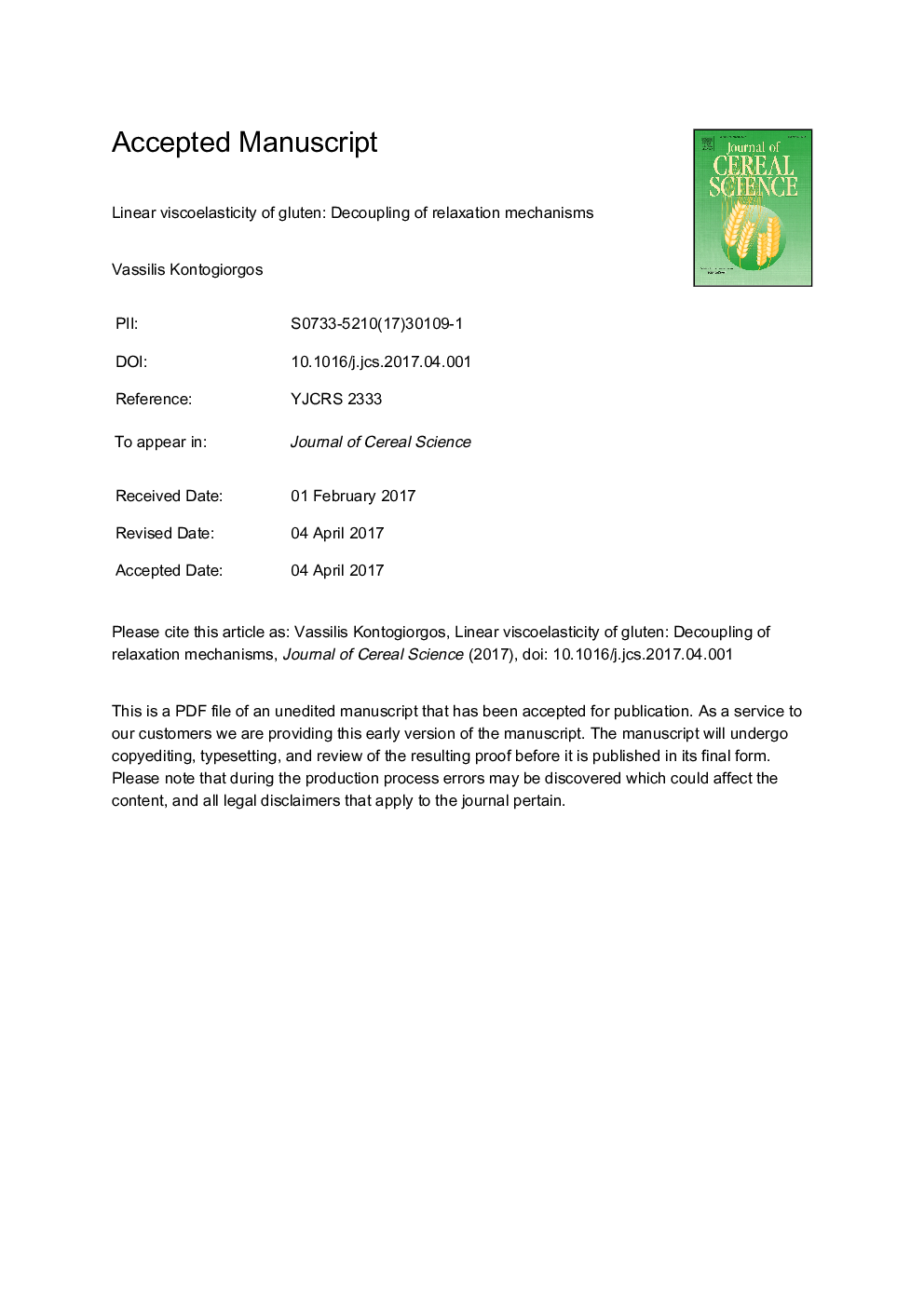| Article ID | Journal | Published Year | Pages | File Type |
|---|---|---|---|---|
| 5762382 | Journal of Cereal Science | 2017 | 30 Pages |
Abstract
The influence of water content on the relaxation dynamics of mesoporous gluten networks has been explored in a wide range of temperatures. The systems were investigated in the linear viscoelastic region by means of stress relaxation, creep and numerical analysis of data. Time-temperature superposition principle and sticky reptation dynamics have been used to provide molecular interpretation of gluten relaxation. Overall, hydration influences relaxation behaviour of the system, which can be linked to changes in the secondary structure of gluten proteins with increase in water content. Relaxation spectra calculated with Tikhonov regularization revealed the remarkable influence of water on the long times relaxation processes of the material. Creep measurements and extraction of dynamic data with direct conversion of creep data via Laplace transform augmented the experimental timeframe of observations to low frequencies unattainable by standard frequency sweeps. The predominance of loss modulus at long times is attributed to migration of water within the nanopores of the structure. Samples also exhibit self-similar relaxation a characteristic of systems existing at a critical state. Two relaxation mechanisms can be distinguished: one arising from viscoelastic relaxation of protein chains and an additional stemming from poroelastic relaxation owing to migration of water in the system.
Related Topics
Life Sciences
Agricultural and Biological Sciences
Agronomy and Crop Science
Authors
Vassilis Kontogiorgos,
